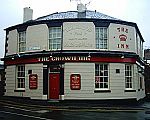St Paul's Church and Centre, Norton Lees, Sheffield
1877 establishments in England19th-century Church of England church buildingsChurch of England church buildings in South YorkshireChurches completed in 1877Churches in Sheffield

St Paul's Church and Centre is a Parish Church in the Church of England Diocese of Sheffield located at the junction of Norton Lees Lane and Angerford Avenue, just above Meersbrook Park. Originally built between 1875 and 1877, St Paul's was much altered to meet the needs of an expanding congregation in 1935 when C. B. Flockton added broad North and South aisles. The recent phase of redevelopment, 2006–7, has just been completed. The church pews have been removed and replaced with modern chairs, and other rooms, such as the vestry, have been modernised for use as community rooms.
Excerpt from the Wikipedia article St Paul's Church and Centre, Norton Lees, Sheffield (License: CC BY-SA 3.0, Authors, Images).St Paul's Church and Centre, Norton Lees, Sheffield
Angerford Avenue, Sheffield Norton Lees
Geographical coordinates (GPS) Address External links Nearby Places Show on map
Geographical coordinates (GPS)
| Latitude | Longitude |
|---|---|
| N 53.35 ° | E -1.473 ° |
Address
St Paul's
Angerford Avenue
S8 9BB Sheffield, Norton Lees
England, United Kingdom
Open on Google Maps








